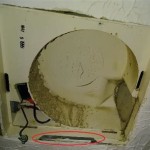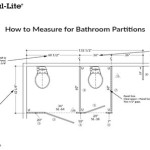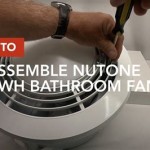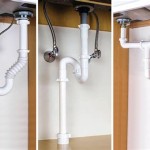Jacuzzi Bathroom Faucets Parts: A Comprehensive Guide
Jacuzzi bathroom faucets are known for their quality, design, and durability. Understanding the various parts that comprise these faucets is essential for proper maintenance, repair, and replacement. This article provides a detailed overview of the different components found in Jacuzzi bathroom faucets, shedding light on their functions and potential issues.
Understanding the Basic Components
A Jacuzzi bathroom faucet, like most faucets, comprises several key parts working in conjunction to control water flow and temperature. These include the faucet body, handles (or a single lever), spout, aerator, cartridge (or valve system), and various connecting pieces. Each plays a critical role in the faucet's overall performance.
The faucet body is the main structural element, typically made of brass, chrome-plated brass, or stainless steel. It houses the internal mechanisms responsible for regulating water flow. The handles, or lever, are the user interface used to control the hot and cold water supply. The spout directs the water into the sink or basin. An aerator, attached to the spout, mixes air with the water stream to reduce splashing and conserve water.
The cartridge (or valve system) is the heart of the faucet, controlling the mixing of hot and cold water and regulating the water pressure. Connecting pieces, such as supply lines and mounting hardware, secure the faucet to the sink and connect it to the water supply.
Detailed Breakdown of Key Faucet Parts
Delving deeper, let's examine each of the key components of a Jacuzzi bathroom faucet in more detail:
1. Faucet Body: The faucet body is the foundation of the entire assembly. Its internal design is crucial for ensuring proper water flow and preventing leaks. It typically features channels for hot and cold water to pass through and a mixing chamber where the water temperature is adjusted.
The material of the faucet body significantly impacts its longevity and resistance to corrosion. Brass is a commonly used material due to its durability and resistance to dezincification (the leaching of zinc from brass alloys). Chrome plating is often applied to brass faucet bodies to provide a polished look and added protection against corrosion.
2. Handles/Lever: Handles, commonly found in two-handle faucets, and levers, typically seen in single-handle faucets, control the flow of hot and cold water. In two-handle faucets, one handle controls the hot water supply, and the other controls the cold water supply. The user adjusts the temperature and flow rate by turning the handles. In single-handle faucets, the lever typically moves up and down to control the flow rate and left and right to control the water temperature.
The handles and lever are often made of metal or plastic and are designed to be ergonomically comfortable to use. The internal mechanisms connecting the handles or lever to the cartridge or valve system must be robust to withstand repeated use.
3. Spout: The spout directs the water into the sink or basin. It comes in various shapes and sizes, from curved gooseneck spouts to straight, low-profile designs. The spout's internal diameter and design influence the water flow rate and pressure.
The spout is usually made of the same material as the faucet body and is typically coated with chrome or another finish to match the overall faucet design. A swivel spout can rotate, providing greater flexibility in directing the water stream.
4. Aerator: An aerator is a small device screwed into the end of the spout. It mixes air with the water stream, creating a bubbly, less forceful flow. This reduces splashing, conserves water, and can often soften the water stream, making it feel more pleasant on the skin.
Aerators contain a series of screens or baffles that create turbulence and mix air with the water. Over time, these screens can become clogged with mineral deposits, reducing the aerator's effectiveness. Regular cleaning or replacement of the aerator is recommended to maintain optimal performance.
5. Cartridge (or Valve System): The cartridge, or valve system, is the most crucial part of the faucet. It controls the mixing of hot and cold water and regulates the flow rate. There are several types of cartridges used in bathroom faucets, including compression valves, ball valves, ceramic disc cartridges, and cartridge valves.
Compression valves are an older design that uses rubber washers to seal the water flow. These are prone to wear and tear and often require more frequent replacement. Ball valves use a perforated ball to control the water flow and mixing. Ceramic disc cartridges use two ceramic discs with precisely aligned holes to regulate water flow and temperature. They are known for their durability and leak-resistant performance. Cartridge valves, are generally cylindrical, are often made up of several plastic components and seal onto rubber seats within the faucet body.
The type of cartridge used in a Jacuzzi bathroom faucet will determine its overall performance and longevity. Ceramic disc cartridges are generally considered the most reliable and durable option.
6. Supply Lines: Flexible supply lines connect the faucet to the hot and cold water supply pipes. These lines are typically made of braided stainless steel or flexible plastic and are designed to withstand high water pressure.
The supply lines should be long enough to reach the water supply pipes without being stretched or kinked. Periodic inspection of the supply lines is recommended to check for leaks or signs of wear.
7. Mounting Hardware: Mounting hardware secures the faucet to the sink or basin. This typically includes nuts, washers, and a mounting plate or bracket. The mounting hardware must be strong enough to hold the faucet securely in place and prevent it from wobbling or leaking.
The type of mounting hardware used will depend on the design of the faucet and the type of sink or basin it is being installed on. Proper installation of the mounting hardware is essential for ensuring a stable and leak-free installation.
Common Issues and Troubleshooting
Like any mechanical device, Jacuzzi bathroom faucets can experience problems over time. Common issues include leaks, reduced water flow, dripping, and stiff handles. Understanding the potential causes of these problems can help with troubleshooting and repair.
Leaks: Leaks are a common faucet problem. They often occur around the base of the faucet, the spout, or the handles. Leaks around the base of the faucet may indicate a problem with the mounting hardware or the O-rings that seal the faucet to the sink. Leaks from the spout or handles often indicate a worn-out cartridge or valve system. Replacing the cartridge or valve system is usually the solution.
Reduced Water Flow: Reduced water flow can be caused by a clogged aerator, a blockage in the supply lines, or a malfunctioning cartridge. Cleaning the aerator is a simple first step. If the problem persists, check the supply lines for kinks or obstructions. A faulty cartridge may require replacement.
Dripping: Dripping faucets are often caused by a worn-out cartridge or valve system. Over time, the seals within the cartridge can degrade, allowing water to leak through. Replacing the cartridge is the most effective solution.
Stiff Handles: Stiff handles can be caused by mineral buildup around the cartridge or valve system. Disassembling the faucet and cleaning the affected parts can often resolve this issue. Lubricating the cartridge with a silicone-based grease can also help. In some cases, the cartridge may need to be replaced.
Maintenance and Care
Proper maintenance and care can extend the life of a Jacuzzi bathroom faucet and prevent many common problems. Regular cleaning is essential to remove mineral deposits and prevent corrosion. Using a mild soap and water solution is generally sufficient for cleaning the faucet's exterior. Avoid using abrasive cleaners, which can damage the finish.
Periodically inspect the faucet for leaks or signs of wear. Tighten any loose connections and replace worn-out parts as needed. Replacing the aerator regularly can help maintain optimal water flow. Consider installing a water softener to reduce mineral buildup in areas with hard water.
When replacing faucet parts, be sure to use genuine Jacuzzi replacement parts or equivalent quality parts. Using inferior parts can compromise the faucet's performance and longevity. Consult a qualified plumber if you are unsure about repairing or replacing faucet parts.

Jacuzzi Water Rainbow 6690 And T581 Tub Deck Mount Faucet Parts Catalog

Jacuzzi Rainbow Parts Guillens Matrix

Jacuzzi Water Rainbow 6690 And T581 Tub Deck Mount Faucet Parts Catalog

Jacuzzi Rp1740 Stems Per Pair With Seats And Springs Locke Plumbing

Piccolo Widespread Faucet Jacuzzi Com

Bathtub Faucet Cartridge Shower Diverter Bathroom Mixer Valve Spare Parts Jacuzzi Ceramic Joom

Bathtub Parts Everyone Should Know About Part Names 2024

Bathtub Faucet Cartridge Shower Diverter Bathroom Mixer Valve Spare Parts Jacuzzi Ceramic Joom

Sea Crest Fill Spout Jacuzzi Parts Guillens

Bathtub Faucet Cartridge Shower Diverter Bathroom Mixer Valve Spare Parts Jacuzzi Ceramic Joom
Related Posts







